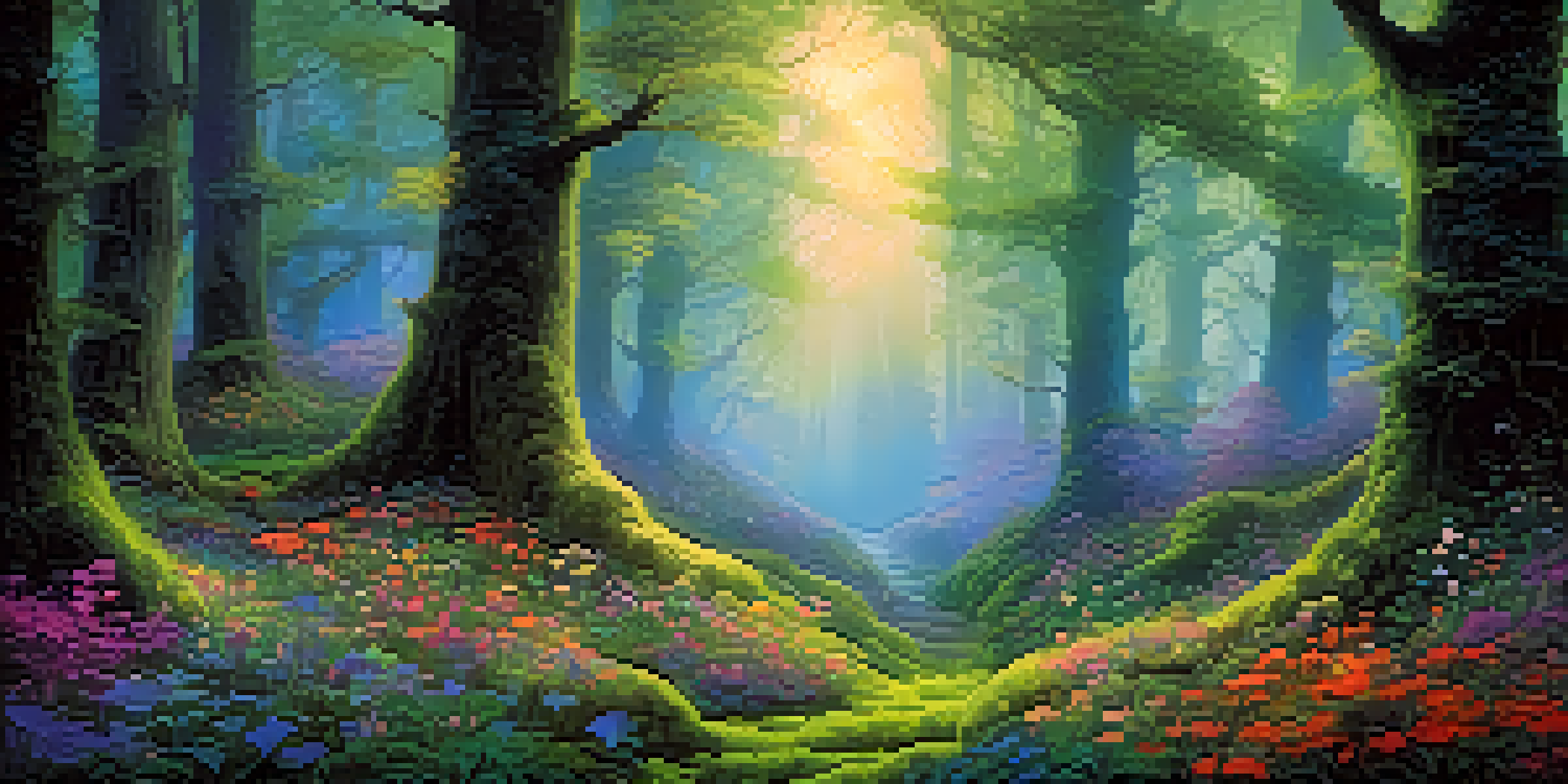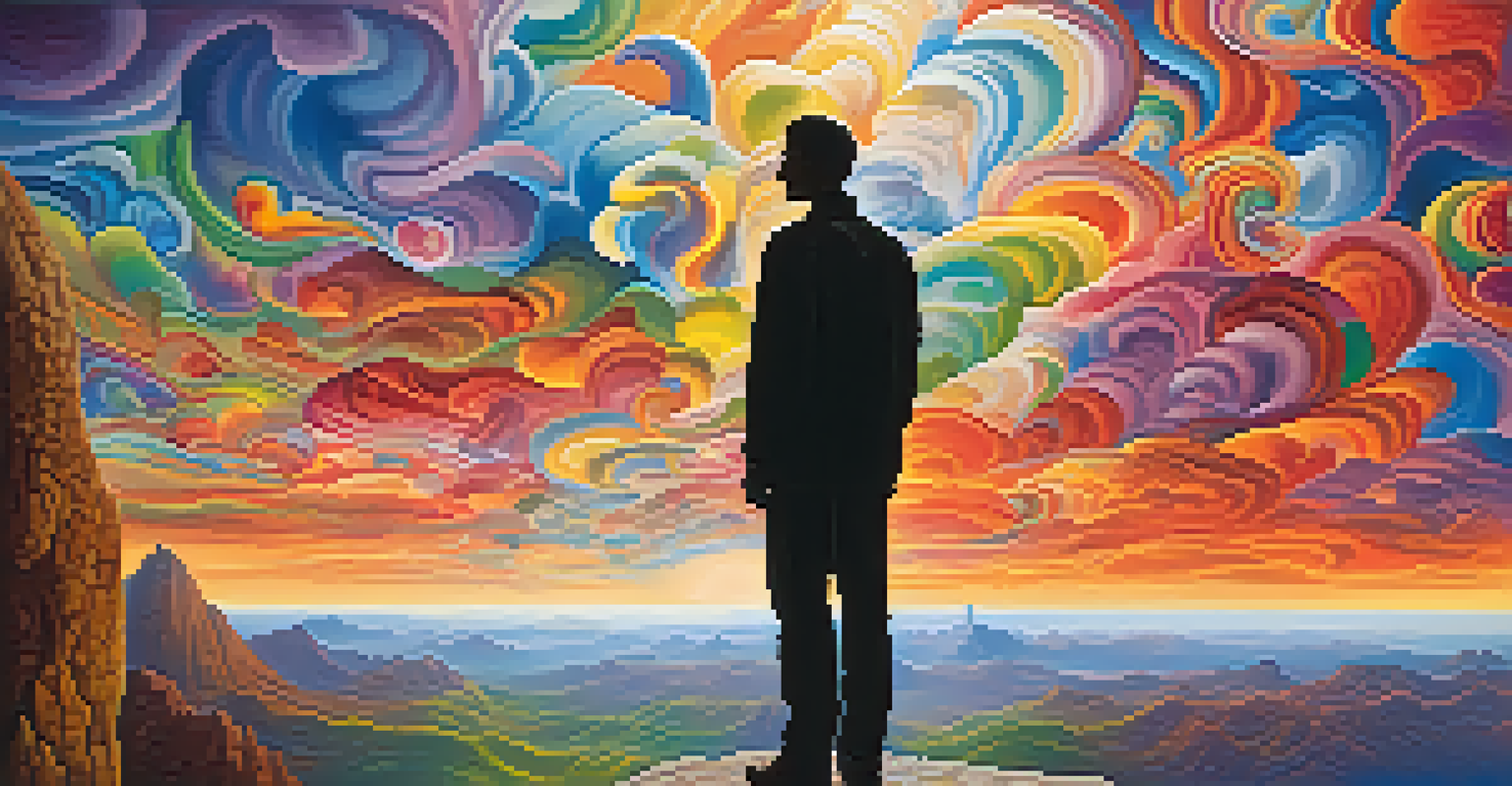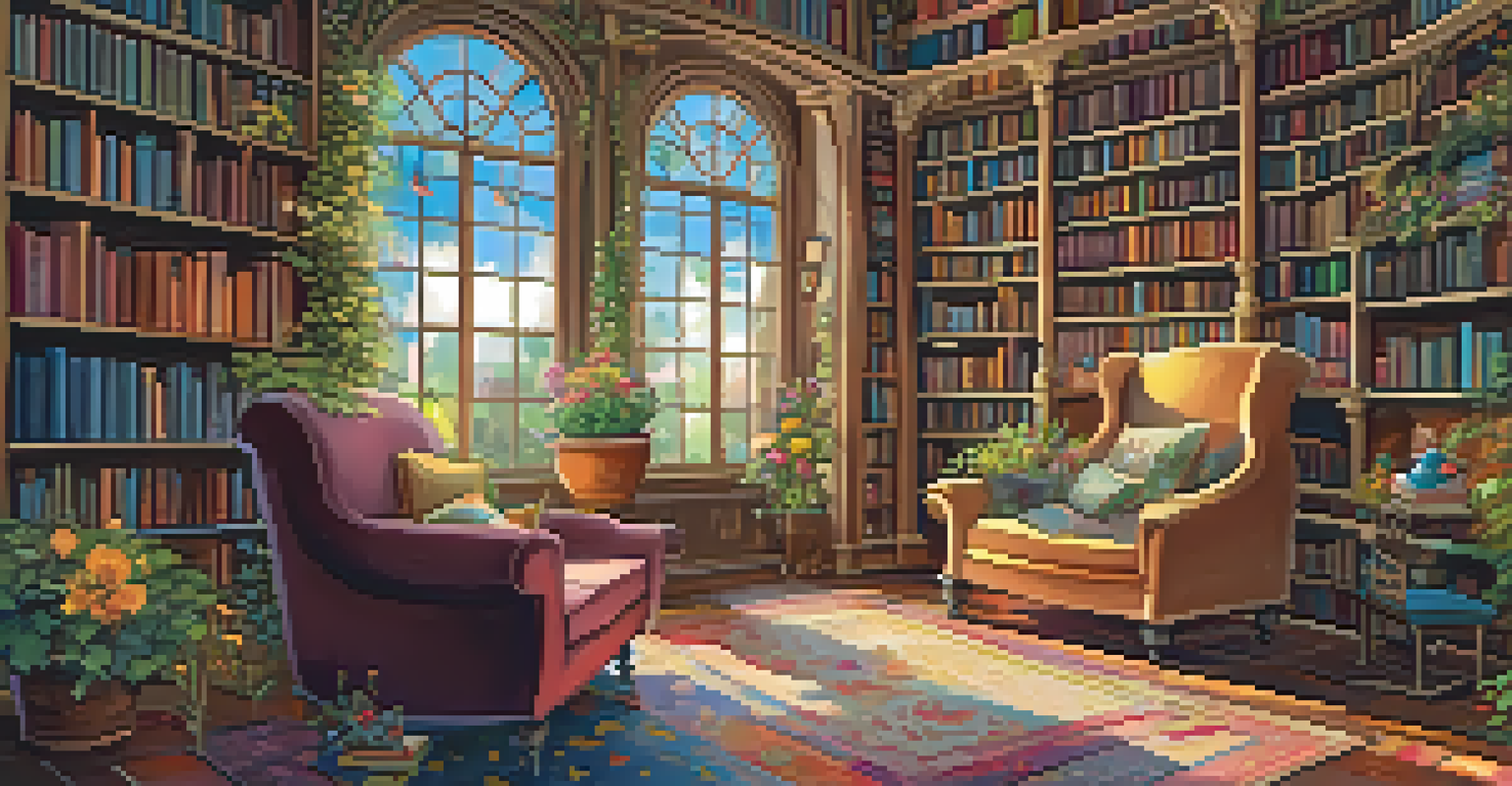Dreamscapes: Entheogens and the Art of Surreal Storytelling

Understanding Entheogens: A Gateway to the Mind's Eye
Entheogens, often derived from natural substances, are known for their ability to alter perception and consciousness. These powerful compounds have been used for centuries in various cultures for spiritual and therapeutic purposes. By expanding our awareness, they offer unique insights into the human experience, often leading to profound revelations and inspiration.
The artist is a receptacle for the emotions that come from all over the place: from the sky, from the earth, from a scrap of paper, from a passing shape, from a spider's web.
Imagine stepping into a vivid dream where the boundaries of reality fade away. This is akin to what many experience when under the influence of entheogens, where imagination runs wild. The mind can traverse landscapes that blend the familiar with the fantastical, allowing storytellers to draw from a well of creativity that might otherwise remain untapped.
As artists and writers engage with these experiences, they can craft narratives that resonate deeply with audiences. Surreal storytelling often mirrors the fluidity of thoughts and emotions encountered during these altered states, creating a bridge between the conscious and subconscious realms.
The Role of Surrealism in Art and Literature
Surrealism, an artistic movement that emerged in the early 20th century, sought to unleash the creativity of the unconscious mind. Artists like Salvador Dalí and writers like André Breton used dream-like imagery and unexpected juxtapositions to challenge conventional perceptions. This movement aligns closely with the experiences induced by entheogens, as both aim to explore the depths of human imagination.

In surreal storytelling, narratives often defy logical structure, creating a sense of wonder and intrigue. Characters may traverse impossible landscapes or engage in dialogues with fantastical beings, inviting readers to question the nature of reality. Such narratives captivate the audience, taking them on a journey that mirrors the exploration of the mind's vast potential.
Entheogens Enhance Creative Insights
Entheogens can expand awareness and inspire artists and writers to tap into deeper levels of creativity.
By embracing surrealism, creators can evoke emotions and provoke thought, revealing hidden truths about the human condition. This ability to tap into the surreal through entheogenic experiences enhances the storytelling process, transforming ordinary tales into extraordinary odysseys.
Exploring the Intersection of Reality and Imagination
One of the most fascinating aspects of entheogens is their ability to blur the lines between reality and imagination. When under their influence, individuals often report vivid visual and auditory hallucinations, transforming their perception of the world around them. This rich tapestry of experiences can serve as a fertile ground for storytellers seeking to weave intricate narratives.
I don't think of myself as a poet. I think of myself as a storyteller.
Consider how a simple walk in the park could morph into an exploration of a vibrant forest inhabited by mythical creatures when viewed through the lens of an altered mind. This transformation allows writers and artists to challenge readers' perceptions, urging them to see beyond the mundane and embrace the extraordinary.
By tapping into these altered states, creators can craft stories that resonate on a deeper level. Such narratives encourage audiences to explore their own imaginations and reflect on the nature of their realities, fostering a sense of connection through shared experience.
The Therapeutic Potential of Entheogens in Storytelling
Recent studies have begun to uncover the therapeutic potential of entheogens in treating various mental health conditions. As individuals navigate their inner landscapes, these substances can facilitate healing and self-discovery. This newfound understanding introduces a compelling narrative element, as stories can mirror personal growth and transformation.
For many, storytelling becomes a vessel for processing experiences, both positive and negative. When combined with the insights gained from entheogenic experiences, narratives can take on a deeper significance, resonating with audiences who may share similar struggles.
Surrealism and Altered Perception
The principles of surrealism align with the experiences induced by entheogens, allowing for narratives that challenge conventional perceptions.
By intertwining personal stories of healing with the surreal, creators can foster empathy and understanding. This therapeutic approach to storytelling allows for a collective exploration of the human experience, illuminating paths toward healing and resilience.
Case Studies: Artists Inspired by Entheogenic Experiences
Throughout history, many artists and writers have openly discussed their experiences with entheogens and how these influenced their work. For instance, the painter Wassily Kandinsky often spoke of his synesthetic experiences, which some attribute to his use of mind-altering substances. His vibrant colors and abstract forms invite viewers to experience art in a profoundly personal way.
Similarly, authors like Aldous Huxley and Hunter S. Thompson incorporated their entheogenic experiences into their writing, offering readers a glimpse into altered states of consciousness. Huxley's 'The Doors of Perception' explores the nature of reality and perception, while Thompson's work embodies the chaotic yet insightful nature of the psychedelic experience.
These case studies highlight the potential of entheogens to inspire creativity and encourage exploration of the self. As contemporary artists and writers continue to draw from these experiences, the legacy of entheogenic storytelling lives on, illustrating the timeless connection between altered states and the creative process.
The Ethical Implications of Using Entheogens
As the popularity of entheogens grows, so too does the conversation surrounding their ethical use. It is crucial to consider the potential consequences of engaging with these substances, particularly in terms of cultural appropriation and the commodification of sacred practices. Respecting the traditions and rituals of indigenous cultures is essential in fostering a responsible approach to entheogens.
Moreover, understanding the potential risks associated with entheogenic use is vital. Not everyone may be prepared for the profound experiences these substances can evoke, and ensuring informed consent is paramount. This awareness can help mitigate any adverse effects, allowing individuals to explore these realms safely and responsibly.
Ethics of Entheogen Use
As entheogens gain popularity, it's essential to approach their use with respect for cultural origins and awareness of potential risks.
By approaching the subject with sensitivity and respect, storytellers can create narratives that honor the origins and significance of entheogens. This ethical lens not only enriches the storytelling process but also invites readers to engage thoughtfully with the themes presented.
The Future of Surreal Storytelling and Entheogens
As society continues to evolve and embrace new understandings of consciousness, the relationship between entheogens and surreal storytelling will likely deepen. With ongoing research revealing the potential benefits of these substances, more artists and writers may feel encouraged to explore their creative possibilities. This trend could lead to a resurgence of interest in surrealism and the narratives it inspires.
Moreover, the digital age offers unprecedented opportunities for creators to share their work and connect with like-minded individuals. Online platforms can facilitate discussions around the intersection of entheogens and storytelling, fostering a vibrant community of artists eager to explore these themes together.

Ultimately, the future of surreal storytelling lies in the hands of those who dare to dream. By embracing the insights gained from entheogenic experiences, creators can craft narratives that not only entertain but also inspire and heal, inviting audiences into the limitless realms of imagination.